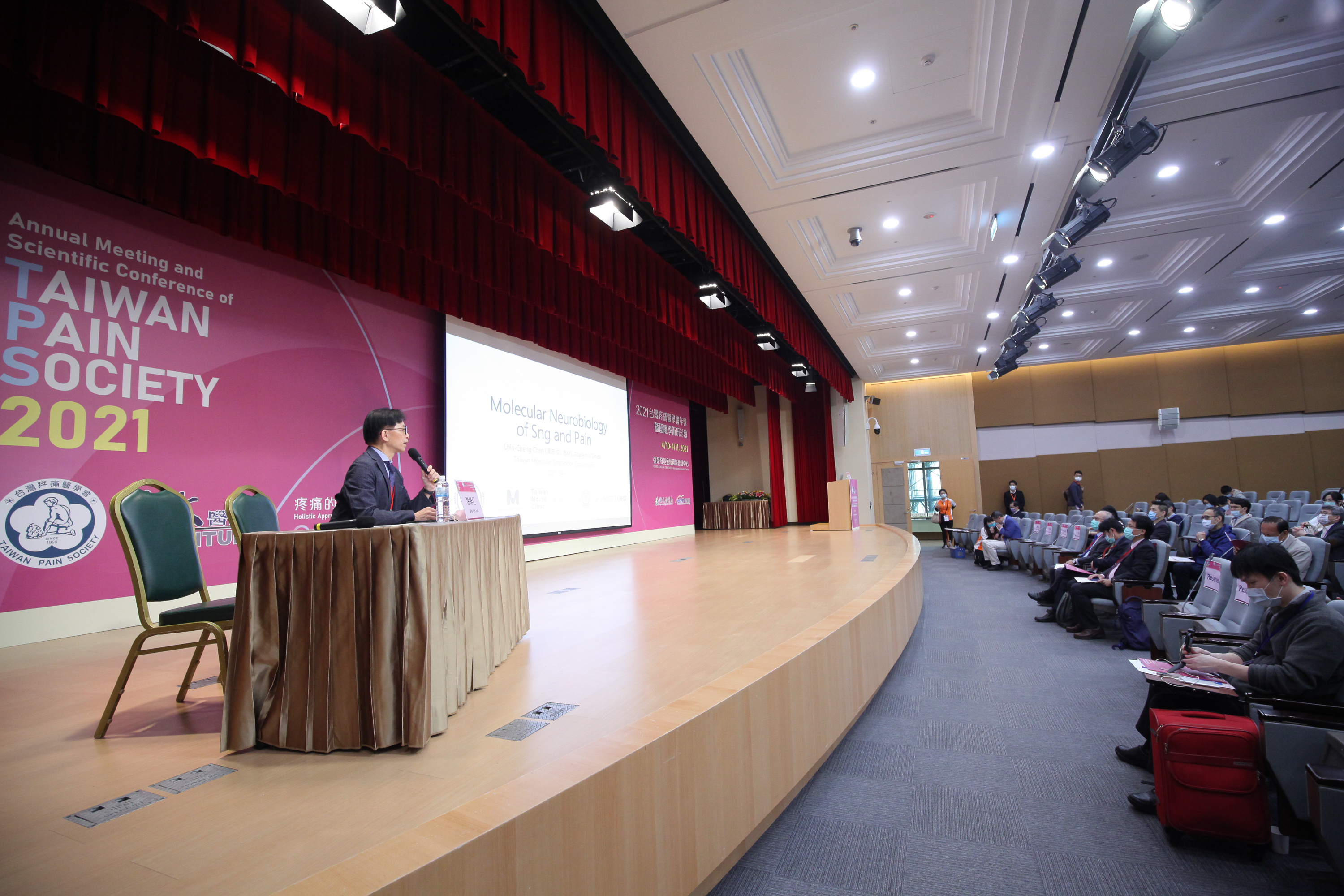
TPS NEWS
Class information
-
繼續教育 2024 TPS Interventional Pain Simulation Workshop (Fluoroscopy)-二天課程
-
繼續教育 2024 TPS Interventional Pain Simulation Workshop (Ultrasound)-三天課程
-
繼續教育 台灣麻醉醫學會113年8月份 區麻醉月會(三叉神經痛的治療與疼痛監測:眼動反應)
-
繼續教育 20240225 線上課程-膝關節進階介紹-Dr.邱熙亭
-
繼續教育 超音波解剖學系列講習視訊課程第二場
News
-
公文訊息 「opioid類藥品安全資訊風險溝通表」業已發布於衛生福利部食品藥物管理署網站,轉知各會員。
-
公文訊息 衛生福利部雙和醫院和台灣精準醫療品質策進會(簡稱精策會)合辦之「113年衛生福利科技交流及環境建置計畫醫藥生技跨領域人才培訓課程」(免費課程),敬請協助轉知同仁或所屬會員踴躍報名參加,請查照。
-
公文訊息 社團法人亞洲華人醫務管理交流學會謹訂於113年5月18~19日(六~日)辦理「數位健康照護與未來虛擬醫療工作坊」,並於113年5月31日(五)辦理「數位健康創新邁向永續標竿參訪」,敬請惠予公告周知並踴躍報名,請查照。
-
其他學會訊息 台灣痠痛研究學會-舉辦TSS 2024 第一屆第2次台灣痠痛研究學會年會
-
公文訊息 台灣運動醫學醫學會擬於2024年6月至2025年9月辦理「運動醫學專科醫師訓練課程」,惠請協助公告並請鼓勵貴機構從事運動醫學相關科別醫師踴躍報名參加。
-
公文訊息 臺北市政府主辦之「2024臺北生技獎」即日起至5月31日止受理全國報名,檢送競賽簡章及新聞稿如附,敬請惠予公告週知,請查照。
-
最新消息 2024台灣疼痛醫學會年會暨國際學術研討會暨第十八屆第二次會員大會提案單
-
最新消息 2024年台灣疼痛醫學會年會暨國際學術研討會
-
其他學會訊息 Early-bird deadline : 31 March - 2nd Multidisciplinary International Musculoskeletal Pain Congress cum 11th Multidisciplinary Musculoskeletal Ultrasound Congress on Pain Management (MSK US PM)_Invitation
-
會議訊息 第十八屆第四次理監事聯席會議
Editor's recommendation
脊椎術後疼痛症候群以神經解離治療的結果_2010年以後的系統性研究回顧
Neurolysis outcome for Failed back surgery syndrome_systemic research review after 2010
關鍵字 percutaneous epidural adhesiolysis;failed back surgery syndrome;low back pain;outcome;經皮硬脊膜外腔沾黏解離術;脊椎手術後疼痛症候群;下背痛;效果
作者 朱辰(Chen Chu);王祈斐(Jeffery Chi-Fei Wang);劉彥青(Yen-Chin Liu)
並列摘要
脊椎手術後疼痛症候群(Failed back surgery syndrome)指的是在脊椎手術後疼痛不如預期的緩解,或是再次出現疼痛的問題。
手術後的疤痕及沾黏造成硬脊膜外腔的發炎,而發炎的過程中又會導致更多的沾黏形成,即使是再次進行手術也難以打破這個惡性循環。通常這群病人在接受保守治療後,可以進行硬脊膜外腔的注射或是再次手術,而近來發展出的經皮硬脊膜外腔沾黏解離術(Percutaneous epidural adhesiolysis)可以是另一種選擇。
經皮硬脊膜外腔沾黏解離術使用特製的Racz導管來破壞沾黏的組織,並在硬脊膜外腔注射類固醇、局部麻醉劑、食鹽水、或透明質酸酶以降低發炎的反應。
這個方式能有效降低病人的下背痛,而且只有很低的併發症發生率。
這篇系統性文獻回顧評估了三篇隨機分派臨床試驗及一篇觀察性研究,發現在實行經皮硬脊膜外腔沾黏解離術的六個月後,病人的疼痛指數降低、生活品質提升,跟實行硬脊膜外腔注射的病人比起來有顯著的差異。除此之外,併發症的發生率及嚴重度不高,且通常都有自限性。
在脊椎手術後疼痛症候群的病人身上,經皮硬脊膜外腔沾黏解離術會是一個有效又安全的處置。
摘要 Summary
Failed back surgery syndrome (FBSS) defined as back pain not resolving to a satisfying level or a new back pain after spinal surgery. The scarring and adhesion in epidural space was considered lead to inflammation then this persisted inflammatory process may rise to more adhesion around nerve roots. So this vicious cycle is hard to break even after another surgery. Epidural injection or another surgery may be considered for those who suffered from persisted pain after conservative treatments. Except the above treatments, percutaneous epidural adhesiolysis (PEA) is one of the well-known options nowadays. By using Racz catheter to mechanically lysis adhesion and/or injecting medications such as steroids, saline, local anesthetics or hyaluronidase into epidural space to reduce inflammatory process, PEA can be an effective procedure to relief low back pain with low complication rate. Three randomized controlled trials and 1 observational study were included in this systemic review of PEA in treating low back pain due to FBSS. All of them showed positive results for pain relief and life quality improvement to 6 months after PEA. Besides, the complication rate was low and those complications were mostly self-limited. This review provides good evidence on effectiveness and safety of PEA in dealing with chronic low back pain due to FBSS.
Jobs
-
人才招募 馬偕醫院麻醉部疼痛科誠徵兩名疼痛專責醫師及數名兼職醫師
-
人才招募 Visiting Scholar Recruitment
TPS video
ABOUT TPS
Link TPS
- 衛生福利部
- 中央健康保險局
- 國家衛生研究院
- 臺灣兒科醫學會
- 婦產科醫學會
- 眼科醫學會
- 針灸醫學會
- 急救加護醫學會
- 外科醫學會
- 內科醫學會
- 急診醫學會
- 牙醫學會
- 家庭醫學會
- 外傷醫學會
- 重症醫學會
- 骨科醫學會
- 復健醫學會
- 麻醉醫學會
- 台灣癌症安寧緩和醫學會
- 台灣遠絡醫學會
- International Association for the Study of Pain (IASP)
- World Institute of Pain (WIP)
- European Pain Federation ( EFIC )
- Society for Pain Practice Management (SPPM)
- American Pain Society
- The Pain Association of Singapore
- World Academy of Pain Medicine Ultrasonography (WAPMU)

















